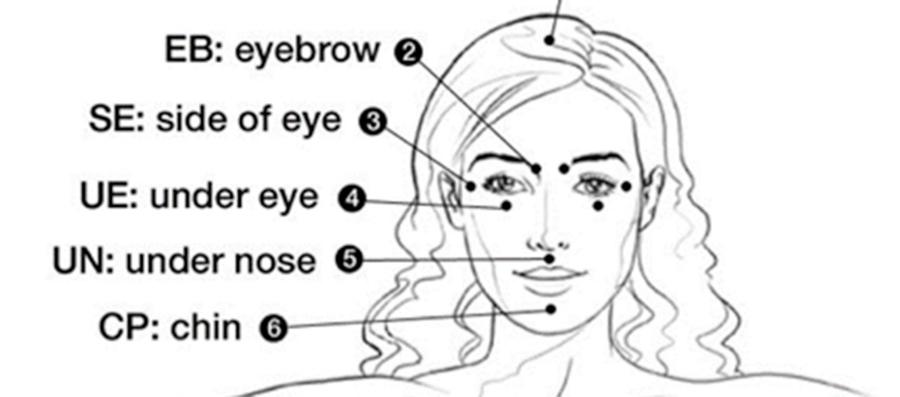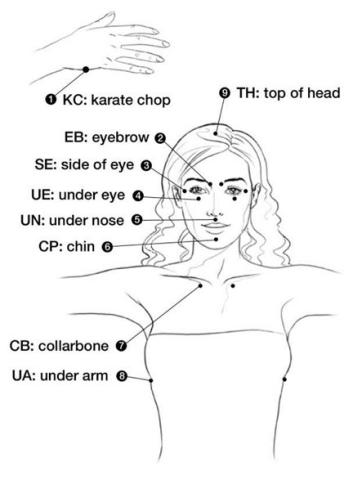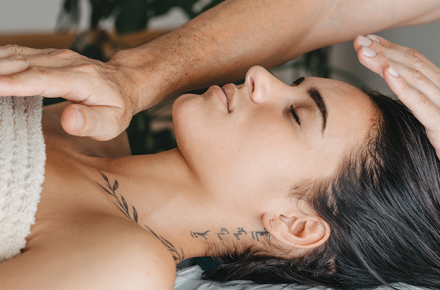How to Use Tapping to Calm Anxiety


April 9, 2020
Based in the mind-body connection, tapping, also known as EFT (Emotional Freedom Technique), combines Chinese acupuncture with modern psychology to bring relief to a range of physical, mental, and emotional issues. Practitioners gently tap a series of nine points on the body while repeating a phrase that describes their emotional state or a challenge to be released, followed by an affirmation.
How does it work?
A 10-year research program at Harvard Medical School using fMRI technology to study brain activity found that “stimulation of acupressure points rapidly reduces limbic system arousal.” In other words, tapping helps calm the activity of the amygdala, the part of our brain that manages our nervous system’s response to a threat (real, perceived, or anticipated) while we give voice to the challenging thoughts and emotions that arise.
Tapping rewires the brain’s response to the threat—and the thoughts and emotions associated with it—and we experience more calm in our body as the relaxed amygdala sends the signal to the endocrine system to stop producing stress hormones. As the nervous system shifts into the relaxation response, we may experience our breath becoming slower and deeper, our heart rate slowing down, and an easing of troubling thoughts and big emotions.
The Nine Points

How to Tap
- Choose a challenge that is present in your life: a stressor, anxiety, phobia, emotional disturbance, chronic pain, addiction, or limiting belief. Write it down.
- Sit or lie down in a comfortable position. Breathe. Relax. Feel.
- Rate the intensity of the challenge you will tap on a scale of one to 10. You’ll check in afterward to see if the intensity changed after tapping.
- Fill in this basic script with your present challenge: Even though [blank], I deeply and competely love myself. Do three rounds of tapping using this script. Repeat the statement, aloud or silently to yourself, as you tap on each of the nine points from the side of the hand to the top of the head (see diagram). For all points, tap lightly with one or two fingertips five to seven times on each point. For the side of the hand (point 1) and under the armpit (point 8), you can tap either side of the body, because the meridian lines are in symmetrical locations on the left and right side of the body. For the points around the bone ridge of the eye socket (points 2–4), use both hands, so you can tap the points on the left and right eye at the same time. Also, use two hands for point 7 under the collarbone. Tap five to seven times on each point.
- Do three rounds of tapping while repeating this statement. Let your emotions move and your breath flow as you tap.
- Now add a “because” to your statement to unpack your thoughts and feelings around this challenge. Even though [blank] because [blank], I deeply and completely love and accept myself. For example, Even though I am anxious because I lost my job, I deeply and completely love and accept myself or Even though I feel fear because there are a lot of things out of my control, I love and accept myself.
- Do three more rounds of tapping, cycling through points 1–9.
- If you wish, keep tapping for another three rounds, and allow other statements that feel true to surface as you tap through the sequence.
- Choose an affirmation (see examples below) and tap through the points another three times.
- Breathe. Relax. Feel.
- Now rate the present level of intensity of how you feel on a scale of one to 10.
Sample Tapping Statements
Not sure how to make up your own script? Here are some sample statements to bring ease during times of uncertainty.
- Even though there is uncertainty in my life, I love and accept myself.
- Even though I don’t have all the answers I want right now, I love and accept myself.
- Even though I feel overwhelmed, I love and accept myself.
- Even though I feel fear, I love and accept myself.
- Even though I feel worried, I love and accept myself.
- Even though I feel anxious, I love and accept myself.
- Even though I feel angry, I love and accept myself.
- Even though I feel sad, I love and accept myself.
- Even though I feel challenged by this, I love and accept myself.
Here are some examples of positive affirmations that you can use when tapping.
- I trust more information will come.
- I trust that I know enough right now to make good decisions.
- In this moment, I let go of the outcome.
- I can be with uncertainty.
- I am learning more about who I am and what my needs are through this situation.
- I embrace time as my ally.
- In this moment, I release control of the future.
- I am ready to receive the gifts of this situation.
- I deeply and completely love and accept myself.
When and how often should I tap?
You may tap as often as you like, any time you like, and when you are at any level of emotional intensity. Tapping when the intensity is low may help you manage the intensity later in the day—you don’t have to wait until your fight-or-flight response is switched on to tap. Tapping has lasting positive effects on well-being, in the same way that meditation and yoga release stress and create new neuropathways in the brain. Like those practices, tapping is another empowering mind-body tool for calming your nervous system.






















































